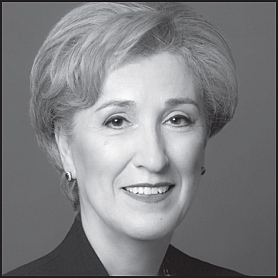NEW YORK TIMES columnist Thomas L. Friedman explained the title of his latest book, Thank You for Being Late: An Optimist’s Guide to Thriving in the Age of Accelerations (New York: Farrar, Giroux and Strauss, 2016), this way. He regularly held breakfast meetings in Washington, DC, in order to fit more into his day. Oftentimes guests would arrive late, flustered and profusely apologetic. “On one of those occasions, I realized I didn’t care at all about my guest’s tardiness, so I said: ‘No, no please, don’t apologize. In fact, you know what, thank you for being late!’ Because he was late, I explained, I had minted time for myself.”
Time is precious indeed given the pace of technological change. Notes Friedman, “As John E. Kelly III, IBM’s senior vice president for cognitive solutions and IBM Research, once observed to me: ‘We live as human beings in a linear world — where distance, time, and velocity are linear.’ But the growth of technology today is ‘an exponential curve.’”
Time for reflection is needed, Friedman argues, in order to really think about the changes all around and adapt to them, before the curve passes us by.
One wonders, though, how we can “pause” when we need to keep up with the global “flows?” Friedman cites management experts who coined the term “the Big Shift … we’re moving from a long period of history in which stocks were the measure of wealth and the driver of growth … ” to a world in which “flows” are the measure of “comparative advantage.”
Flows are easier to exemplify than define. “In 2012, Michelle Obama wore a dress from British online fashion retailer ASOS in a photo that was re-tweeted 816,000 times and shared more than four million times on Facebook; it instantly sold out,” Friedman writes. “Flows” are inherently global, and yet they are also local.
Friedman considers the changes that have rocked the journalism field and turns to other professions as well, including law. He cites an encounter with an entrepreneur who has developed an “expert system” to replace certain legal roles with software. This businessperson told Friedman, “I have always had a special respect for trial lawyers and hope it will be a long time before algorithms replace them.” Many lawyers will recognize that bifurcated action and thought; moreover, many of us are living it out to some extent. Where will we draw the line between human lawyering and cognitive computing?
Friedman meanders topically in this book, especially as he waxes nostalgic about his suburban Minnesota childhood in which the pace of change seemed organic and neighbourly. His purpose in so doing is to centre himself, to “locate my anchor and my sail,” and to inspire readers to “pause and find yours.” Can that really be done in 15 minutes while waiting for a breakfast guest to show up? That may be all the time we have.
Perhaps a bicycle ride would be conducive to centring oneself in order to prepare to send out and receive successful flows? “The time of static stability has passed us by,” writes Friedman, quoting Astro Teller, director of Google’s X research and development laboratories that produced Google’s self-driving car (and that Google is getting into the car business is another flow). But there is still opportunity for a “new kind of stability,” which must be “dynamic stability,” says Teller, using the metaphor of bicycle riding: “you cannot stand still, but once you are moving it is actually easier … humanity has to learn to exist in this state.”
A final word of caution: one of X’s mottos is “Fail fast,” so there may not be a lot of time for reflection in the current paradigm, which is defined by constant movement.
We had all best get at it.
Jean Cumming is the Editor-in-Chief of Lexpert, a suite of award shows and online and print publications from Thomson Reuters.





